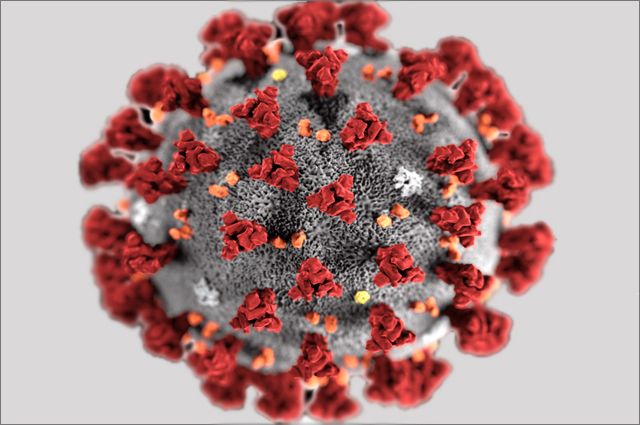The fact that SARS-Cov-2 has combined elements of different viruses, said famous virologist, corresponding member of the Russian Academy of Sciences, Doctor of Biological Sciences, Head of the Laboratory of Biotechnology and Virology, Faculty of Natural Sciences, Novosibirsk State University, Professor Sergei Netesov.
It is worth listening to the professor’s opinion, for many years he headed the famous “Vector” in the Novosibirsk region and knows the subject very well. Here are his words: “The most unusual thing is that SARS-CoV-2 combines features that were previously encountered in a number of other viruses, but separately. The same cytokine storm, that is, dysregulation of the immune system, was observed with other infections. For example, with the Ebola virus.
Thrombus formation, a disseminated blood clotting syndrome often associated with COVID-19, is not new either. It was found not only in the Ebola virus, but also in the Crimean-Congo hemorrhagic fever, dengue fever, hemorrhagic fever with renal syndrome. Many people outside virology are convinced that loss of smell is exclusively a trait of this coronavirus. But at least 20 viruses have the same property. They enter the body by the respiratory route, through the nose, and there are the endings of the main olfactory nerves, which are affected by the virus. Almost always, when a person recovers, the sense of smell is restored. ”

–
Like a key to a lock
How to explain such a global invasion of the new coronavirus into the universe of our body? Did he really borrow some details and mechanisms from different viruses? Not really. It just so happens that this virus has a versatile weapon. It is called differently – S-protein, Spike, thorn, thorn. These spikes sticking out of the virus give it a crown-like appearance. And it is with them that it combines with another protein that is located on the surface of so many human cells. It is referred to as APF2 (or ACE2 in English). Here in this tragic coincidence of the fragments of the spine and the APF2, as a result of which they fit like a key to a lock, — all the power of the virus.
Without a mutation that slightly changed this spike, and coronaviruses would fly over the ACE2 receptor like plywood over Paris, without clinging to it. There would be no pandemic, everything would be the same, and, meeting with this virus, our body would not notice it — we would live with him as in parallel worlds.
But it turned out the way it turned out. The thorn and ACE2 come into contact, the virus enters the cell, begins to multiply in it, new viruses infect new cells, and the disease flares up.
Target man
The second main problem of the universality of the virus lies in the person — we have a lot of ACE2 receptors. These targets for the virus are present in many organs. As a result, SARS-CoV-2 has many entry points into our body. And this means that he can attack a person in many directions.
But here it is appropriate to recall the influenza virus. Like the “crown”, it is also respiratory — enters the human body through the respiratory tract and lungs. But his targets are different. For example, the H1N1 seasonal flu virus does not have as many of them as for the pathogen COVID-19… They are located in the nasal cavity, oropharynx and nasopharynx, in the trachea and at a much lower concentration in the lungs. Therefore, the infection is usually mild with a mild runny nose, a sore throat, and a cough.
But its relative, the H5N1 bird flu, enters the victim’s body differently — targets for it are mainly located in the lungs (as for the new coronavirus). The area of the alveoli is gigantic, much larger than in the respiratory tract (this is done by nature so that gas exchange in the lungs occurs better), and there are a lot of entry points for the virus. Therefore, this flu is difficult and sometimes with a cytokine storm similar to that of COVID-19. In general, this specificity of lung damage with influenza and coronavirus has a lot in common. Only these viruses have different targets. SARS-CoV-2 enters the cells of the alveoli not like an influenza virus, but in a different way, through the same ACE2 receptors. Which are visible and invisible in the lungs. They are also present in the nasopharynx and oropharynx, but in a lower concentration. Therefore, the lesion of this area with COVID-19 is moderately expressed. And in the lungs, a real battle develops, leading to a cytokine storm.

–
The whole body is under attack
Since there is a lot of ACE2 protein in the cells of the intima (the inner lining of blood vessels), there the coronavirus also causes inflammation, this makes the cytokine storm heavier and promotes the formation of blood clots.
There are also a lot of organs whose cells have ACE2 receptors. For example, entering the nasal passages, the coronavirus primarily meets the olfactory organ, and it also contains such receptors. And therefore, loss of smell is one of the first symptoms. COVID-19.
ACE 2 is also found in the cells of the heart, kidneys, reproductive system and a number of other organs. But the coronavirus cannot immediately get to these receptors, they do not have contact with the atmosphere, which means that viral particles in the inhaled air “will not get to them.” But after SARS-CoV-2 settles in the lungs and enters the bloodstream, it can infect these and all other cells on the surface of which there is ACE2. Hence, such a wide spread of coronavirus throughout the body and such a number of organs and systems affected by it.
In short, it all depends on the target that the virus hits. And if it is as important and ubiquitous in the body as the ACE2 protein, and access to it is possible through such a convenient springboard as the lungs, then any other virus can also become a universal killer.
– .


